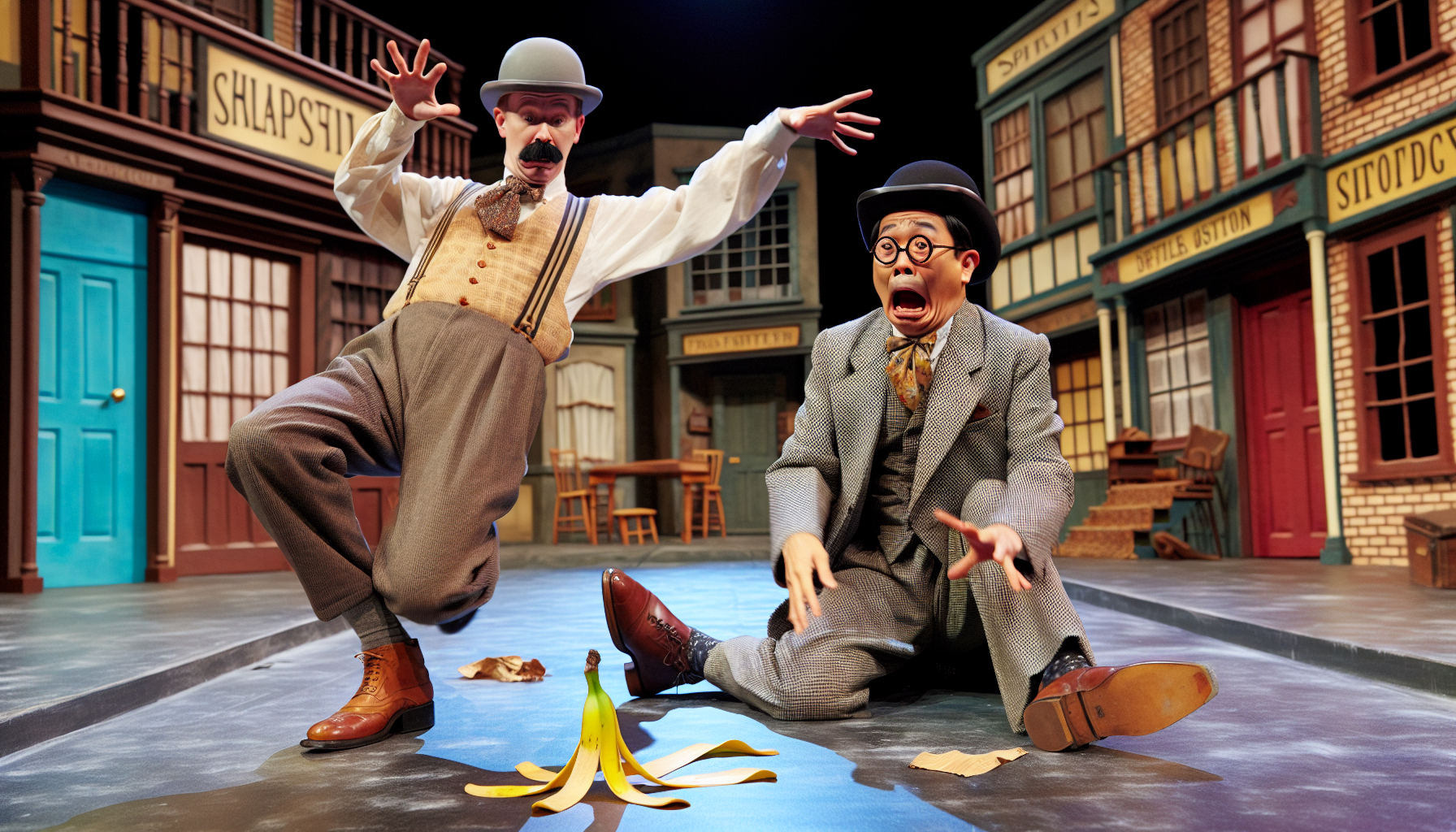- Home
- Screenwriting
- Laughing Out Loud: Exploring Physical Comedy and Slapstick in Films

Laughing Out Loud: Exploring Physical Comedy and Slapstick in Films
Physical comedy and slapstick have been vital ingredients of cinematic humor since the inception of film. This genre of comedy, characterized by exaggerated physical movements, visual gags, and sometimes situational absurdity, has the power to transcend language barriers and connect with global audiences through the universal language of laughter. Exploring the realm of physical comedy and slapick in films reveals a rich history of innovation, artistry, and profound influence on the evolution of comedic cinema.
The Origins of Slapstick and Physical Comedy
The term slapstick itself originates from a prop in commedia dell’arte, a form of Italian theater that blossomed in the 16th century. The slapstick was a wooden stick that slapped noisily when used, creating a comic effect without causing real harm. This comedic tool epitomized the essence of physical comedy: the creation of laughter through bodily actions and exaggerated sounds.
Golden Age of Silent Cinema
The silent film era marked the golden age of slapstick comedy, with pioneers such as Charlie Chaplin, Buster Keaton, and Harold Lloyd leading the way. With the absence of spoken dialogue, these comedic geniuses relied heavily on physical humor, facial expressions, and the comedic potential of the film medium itself to tell stories and amuse audiences. Charlie Chaplin’s The Tramp character, with his slapstick antics and remarkable physicality, became a cultural icon, showcasing how empathy and humor could be intertwined through physical comedy.
Slapstick in the Sound Era
As cinema transitioned into the sound era, the essence of slapstick and physical comedy adapted rather than diminished. The Marx Brothers, with their chaotic blend of verbal wit and slapstick, and Laurel and Hardy, with their iconic physical comedy routines, demonstrated that sound could enhance rather than eclipse the visual humor that slapstick was known for. Moreover, films like Singin’ in the Rain (1952) and Jacques Tati’s Monsieur Hulot’s Holiday (1953) proved that physical comedy could be both sophisticated and universally appealing.
Modern Takes on Slapstick
In more recent decades, filmmakers like Mel Brooks, the Farrelly Brothers, and even animated movies such as those produced by Pixar, have kept the spirit of slapstick alive, blending it with dialogue-driven humor and special effects to create multidimensional comedic experiences. Jim Carrey, with his rubber-faced expressions and uninhibited physicality, brought a new era of slapstick to the forefront in the 1990s with films like Ace Ventura: Pet Detective and The Mask.
Slapstick’s Timeless Appeal
What makes slapstick and physical comedy so enduring is its ability to appeal to the most basic human instinct: laughter in response to surprise and the incongruity of expectations versus reality. It operates on a visceral level, bypassing intellectual barriers and making an immediate, direct connection with the viewer. This universal language of comedy brings people together, reminding us of our shared humanity.
As we explore the landscape of slapstick and physical comedy in films, it becomes evident that this genre is not just about cheap laughs or simple gags. It requires meticulous timing, exquisite control over one’s body, and an intimate understanding of the rhythm and flow of a scene. Physical comedy and slapstick continue to evolve, reflecting changes in societal attitudes and technological advances, yet their core mission remains unchanged: to evoke laughter through the joyous celebration of human fallibility and resilience.
The Ultimate Screenwriting Guide!





